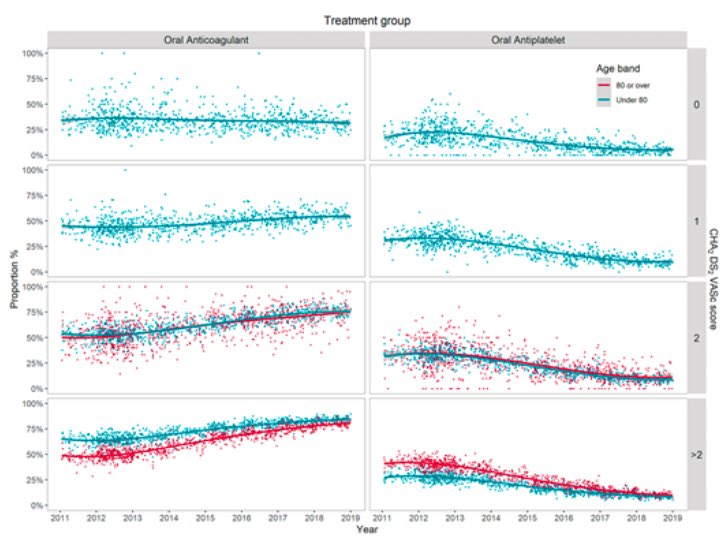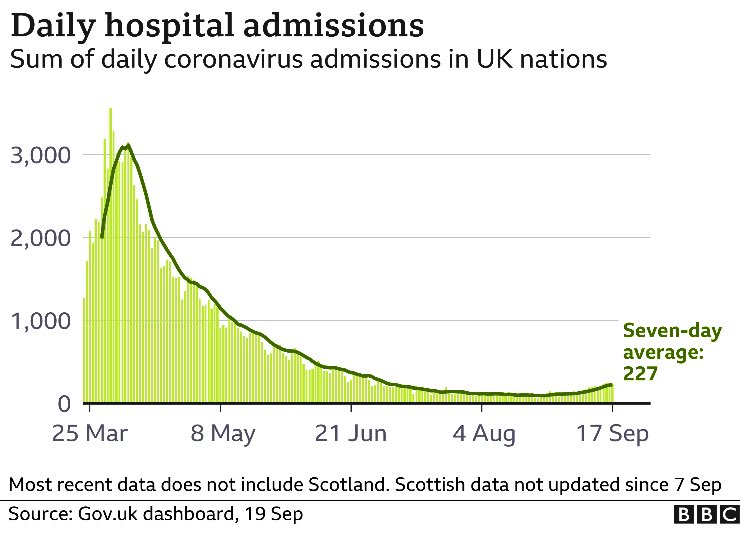This population-based, multicentre, 10-year study of the use of oral #anticoagulants for #stroke prophylaxis for ~0.5M patients with #AFib found that their prescription for patients with #AF at high risk of stroke increased by nearly 60%.
Between 2009 & 2018, 3352 individual General Practices provided a total of 5968 uploads into the GRASP-AF database. From the first upload per General Practice, there were an estimated 450 518 patients with #AFib from a total of 24 644 210 people.
Over the study period the prevalence of AF was 1.8% [95% CI 1.7–1.9%], which increased from 1.6% (1.5–1.7%) in 2009 to 2.4% (2.3–2.5%) in 2018 (P-trend < 0.001). 

The prevalence of AF was stable for people aged <65 years (P-trends not significant), but increased over time for those aged 65–79 & ≥80 years (P-trend, both <0.001).
By 2018, about three quarters of all patients recorded in primary care in England with #AFib & a #CHADS2 or #CHA2DS2VASc score ≥2 were receiving oral anticoagulants.
This increase in oral #anticoagulant prescription occurred at a time of a dramatic rise in the prescription of #DOACs.
Beyond the decline in the use of antiplatelet therapy, however, there was evidence for General Practice level variation in the use of oral anticoagulants for #stroke prophylaxis.
Although the geographic variation decreased over the study period, it was still evident in 2018 & suggests that the potential to reduce the risk of #AFib related #stroke has not been fully realised.
In addition, there was a clear ‘oral anticoagulant prescription gap’ among the elderly, which was evident for the prescription of #DOACs .
Prescription of oral anticoagulants & antiplatelets for #stroke prophylaxis in atrial fibrillation: nationwide time series ecological analysis by @JianhuaWu6 @ESC_Journals #EuroPace
Cite as, Jianhua Wu, Eman S Alsaeed, James Barrett, Marlous Hall, Campbell Cowan, Chris P Gale, Prescription of oral anticoagulants and antiplatelets for stroke prophylaxis in atrial fibrillation: nationwide time series ecological analysis, EP Europace, , euaa126,
“Despite a reduction in the oral anticoagulant-prescription gap, a new paradox exists relating to #DOAC prescription for the elderly & those at higher risk of #stroke.”
Free access to the full manuscript @ESC_Journals here: Prescription of oral anticoagulants and antiplatelets for stroke prophylaxis in atrial fibrillation: nationwide time series ecological analysis academic.oup.com/europace/europ…
• • •
Missing some Tweet in this thread? You can try to
force a refresh









